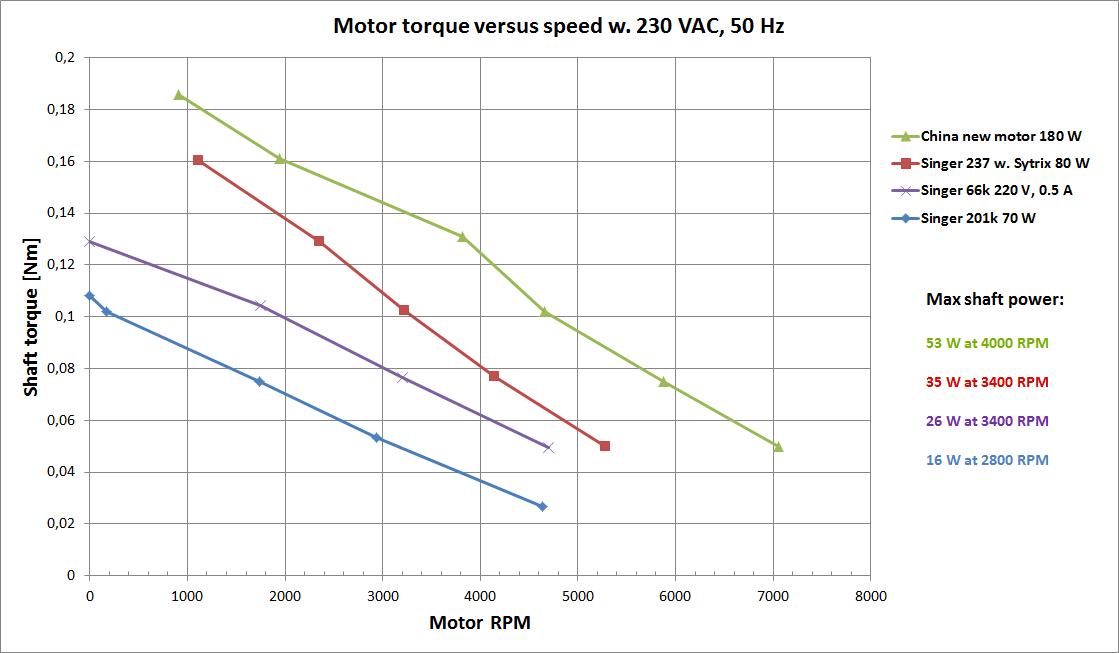Originally Posted by
OurWorkbench

I'm wondering what you consider weak.
Thanks for your comment OurWorkbench.
I think that the 201 have got some excelent and strong mechanics, and it can gain a lot from having a stronger electric motor, that the original to domestic purposes. This is an example of the strength of a 201k with a modified drive:
Video of Singer 201k sewing plywood
According to my information, the potted motors used in the US have a 0.6 A rated input current. Many machines produced by Japan in the 1950-1970 for the US market had external motors with an input current of 1.0 - 1.5 A. I know, that it do not transfer directly to shaft power of the motor, but I think most electric motors at the time had higher input current than this 0.6 A and therefore the potted motor most likely have got lower shaft power than many other machines on the market.
For the European market the 201k was almost all belt driven with external motor. I have got two of those. I have measured the shaft torque and shaft power of one of these motors (produced 1950) and compared it to motors from a 66k (from 1930), the motor of a Singer 237 and a modern cheap motor from China. The result is here:

(I own the copyrights of this line chart in png-file)
As you can see, the motor of the 201 got the lowest shaft power in this comparison.
I do not know why the original motors for 201 was chosen to be so weak compared to motors of other sewing machines. I guess that special versions with stronger motors were sold for industrial use in upholstery and bookbinding.